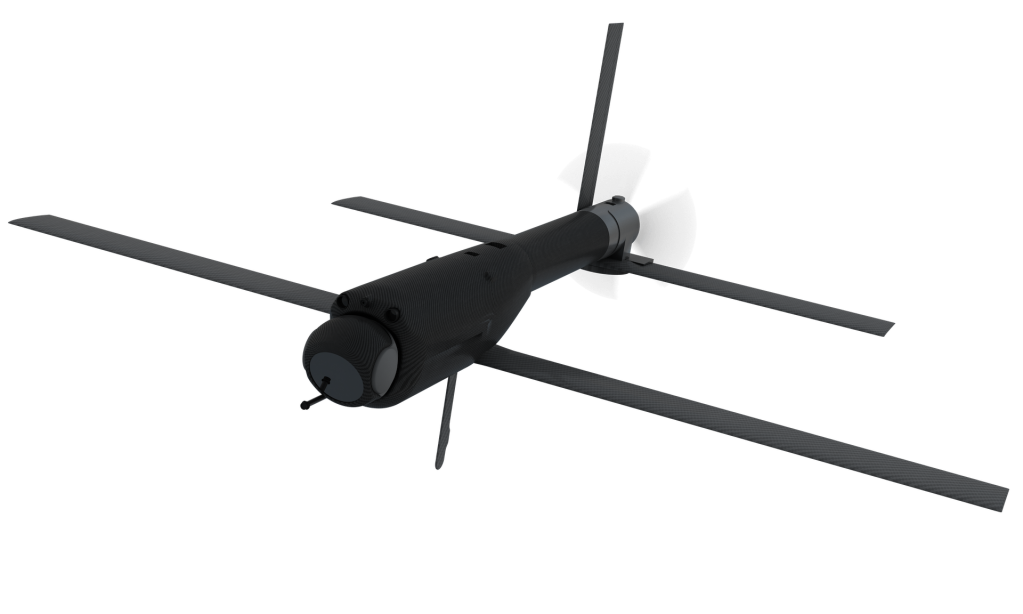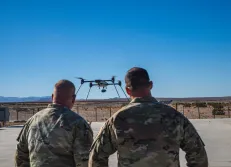Pentagon secures $500M for first tranche of Replicator systems

The Department of Defense has secured the funding it needs to move forward with the first tranche of systems for its Replicator initiative, the department announced Monday.
A stated goal of Replicator is to accelerate programs and field thousands of “attritable autonomous” systems across multiple domains by August 2025 to help the U.S. armed forces counter China’s military buildup.
Officials say the department got the money it was seeking from Congress for fiscal 2024 as it works to achieve that goal.
“The Department has secured its needed funding of about $500 million for FY24, to include approximately $300 million from the Fiscal Year (FY) 2024 defense appropriations bill supporting the Department’s reprogramming request and additional funding identified using existing authorities and Defense-wide sources,” the Pentagon said in a release Monday.
Some of that additional $200 million in funding will come from reprogramming “under-executed” funds that were available and other pots of money, senior defense officials told a small group of reporters during a call ahead of the announcement.
“The funding is fully identified from the department’s perspective. So in addition to the $300 million … there is additional money that is either in the FY ‘24 appropriation that could be used for this effect. There’s funding in the recently passed [national security] supplemental that could be used for this. And so … internally the funding is fully aligned to Replicator and we are just going through the final processes to formalize that,” one of the officials said.
After the call, the department issued a statement saying: “We were pleased to see the appropriators include approximately $300 million toward the initial tranche of Replicator systems. This amount fully satisfied the classified reprogramming request that we transmitted to Congress in January. Since the enactment of the FY24 budget, we have worked with Congress to successfully reach our requirement of around $500 million using existing authorities and Defense-wide sources.”
As DefenseScoop has previously reported, the first tranche includes kamikaze drones, unmanned surface vessels and counter-drone systems. The Pentagon publicly released some information about the systems it selected in its announcement Monday.
Officials noted that the vendor base for Replicator includes traditional and non-traditional vendors providing systems, components, software and payloads.
Replicator-related funding for the Switchblade 600, a kamikaze drone made by AeroVironment, will boost the LASSO program, the Army’s acquisition chief Doug Bush told DefenseScoop last week during a meeting with reporters.

The first tranche will also feature maritime drones including various types of unmanned surface vessels.
“In the maritime domain, the Department is diversifying the vendor base for USVs through the recently announced Production-Ready, Inexpensive, Maritime Expeditionary (PRIME) Commercial Solutions Opening (CSO). The CSO process allows U.S. and international companies to pitch technologies to the Department in a fast-track process for a prototype contract. Launched on January 30, 2024, the PRIME CSO received over one hundred applications from commercial technology companies. With FY24 funding secured, the Department is on track to award several contracts this summer,” the Pentagon said in Monday’s release.
The Defense Innovation Unit, headquartered in Silicon Valley, is spearheading the PRIME initiative.
“Meeting the strategic imperatives facing the nation requires that we harness the very best of America’s commercial technology in non-traditional partners, alongside our traditional sources of defense capabilities,” DIU Director Doug Beck said in a statement. “Replicator is doing just that, and that is why we at DIU are proud to work with our partners from across the Department of Defense to make it a reality.”
The first tranche of Replicator systems includes capabilities that remain classified, including “others in the maritime domain” and some in the counter-drone portfolio, according to the release.
“I am pleased to announce that the Department will begin investing in scalable production for these critical capabilities,” Deputy Secretary of Defense Kathleen Hicks said in a statement. “We are taking an important step toward strengthening our defense and technology industrial base. And, we are demonstrating the Department’s ability to break down barriers to scaling innovation at speed not just for [all-domain attritable autonomous] systems, but in our ability to develop new capabilities and processes for the Department and key stakeholders, including Congress.”
DefenseScoop previously reported that USV systems and interceptors affiliated with a Navy Special Warfare and Office of Naval Research program were also chosen for Replicator. Anduril’s Wide-Area Infrared System for Persistent Surveillance (WISP) counter-drone technology was also tapped for ramped-up production in association with efforts put forth by the Marine Corps’ Ground Based Air Defense program.
During the background call ahead of Monday’s announcement, senior defense officials said the Pentagon is now on track to meet the goals laid out by Hicks to field thousands of Replicator-related systems by August 2025.
“We’re now poised to execute on tranche one,” one of the officials said. “We will either be awarding contracts or in some cases, contracts already exist and will be modified to accommodate investments from tranche one.”
The officials declined to provide a breakdown of how much funding would go toward each of the capabilities that have been selected.
“We have for reasons of the operational need made some classification decisions, and one of those decisions is around the quantities of specific systems. And so, we won’t be providing the funding at a system level,” an official told DefenseScoop during the call.
Adm. Samuel Paparo, the new commander of U.S. Indo-Pacific Command, applauded the recent developments.
“This is a critical step in delivering the capabilities we need, at the scale and speed we need, to continue securing a free and open Indo-Pacific,” he said in a statement.
While securing the money needed for fiscal 2024 was a key step, there are more challenges to tackle besides buying these systems and having industry manufacture as the Pentagon prepares to field them.
“With that comes a whole lot more hard work that will need to go into making this a reality by August of 2025,” a senior DOD official said during the call with reporters. “That includes continuing to refine the concept of operation and employment for these capabilities; accelerating the experimentation timelines for individual capabilities, but also the collective portfolio to make sure that we are adequately testing and experimenting the mass effects that that we hope to achieve.”
It also includes “generating and tagging high-quality data and developing the algorithmic models to enable the safe, secure and effective degrees of autonomy for these systems; conducting policy reviews to ensure the systems are compliant with our policies and our values; you know, developing common autonomy AI architectures. So there’s just a whole lot of additional work that will continue to go into this so that we can deliver capabilities that are ready to use at the time that they’re delivered,” they added.
Looking ahead, the department has requested about $500 million for Replicator-related efforts in fiscal 2025 and said it will work with Congress to support that request.
Meanwhile, it’s currently evaluating additional capabilities for tranche two.
“I expect that that will include additional attritable systems in some of these same domains that will complement the capabilities of tranche one, and it will also will prioritize enablers such as command and control, autonomy and other software that will increase the overall effectiveness and collaboration across these systems,” a senior DOD official told DefenseScoop during the call.






